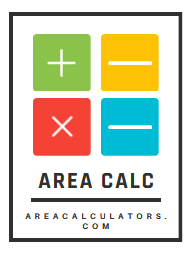In thermal systems, condensers play a crucial role in converting vapor into liquid by removing heat. But how effectively is your condenser performing this task?
The Condenser Efficiency Calculator provides a clear metric to evaluate the performance of your condenser by comparing the actual heat removed to the maximum possible heat removal. This tool is invaluable for engineers, technicians, and energy managers aiming to optimize system efficiency.
What Is Condenser Efficiency and Why It Matters
Condenser efficiency measures how well a condenser removes heat from a system compared to its theoretical maximum. It's expressed as a percentage, indicating the effectiveness of the heat exchange process.
Understanding condenser efficiency is essential because:
-
Energy Savings: Higher efficiency means less energy waste.
-
System Performance: Efficient condensers contribute to optimal system operation.
-
Cost Reduction: Improved efficiency can lead to lower operational costs.
-
Maintenance Planning: Identifying efficiency drops can signal the need for maintenance.
Formula and Variables
🧮 Condenser Efficiency (%) = ((T₂ - T₁) / (T₃ - T₁)) × 100
Contents
Where:
-
T₁ = Inlet cooling water temperature (°C)
-
T₂ = Outlet cooling water temperature (°C)
-
T₃ = Saturation temperature corresponding to the condenser pressure (°C)
📊 Variable Table
| Variable | Meaning |
|---|---|
| T₁ | Inlet cooling water temperature (°C) |
| T₂ | Outlet cooling water temperature (°C) |
| T₃ | Saturation temperature at condenser pressure (°C) |
| Efficiency | Condenser efficiency (%) |
Example: Calculating Condenser Efficiency
Let's consider a condenser with the following parameters:
-
T₁ = 25°C (Inlet cooling water temperature)
-
T₂ = 35°C (Outlet cooling water temperature)
-
T₃ = 50°C (Saturation temperature at condenser pressure)
Applying the formula:
Efficiency (%) = ((35 - 25) / (50 - 25)) × 100 = (10 / 25) × 100 = 40%
This means the condenser is operating at 40% efficiency.
How to Use the Condenser Efficiency Calculator
-
Measure Temperatures: Obtain the inlet and outlet cooling water temperatures and the saturation temperature corresponding to the condenser pressure.
-
Input Values: Enter these values into the calculator.
-
Calculate: The calculator will compute the efficiency percentage.
-
Interpret Results: Use the efficiency value to assess condenser performance and identify areas for improvement.
Where This Calculator Is Used in Real Life
-
Power Plants: Evaluating condenser performance in thermal power generation.
-
HVAC Systems: Assessing efficiency in heating, ventilation, and air conditioning systems.
-
Industrial Processes: Monitoring condensers in chemical and manufacturing industries.
-
Refrigeration Units: Ensuring optimal performance in commercial refrigeration.
Tips for Accurate Condenser Efficiency Calculations
✅ Ensure accurate temperature measurements.
✅ Regularly calibrate temperature sensors.
✅ Consider environmental factors affecting condenser performance.
✅ Maintain clean heat exchange surfaces to prevent fouling.
✅ Monitor condenser pressure to determine accurate saturation temperatures.
Common Mistakes to Avoid
❌ Using incorrect or uncalibrated temperature sensors.
❌ Neglecting the impact of ambient temperature on condenser performance.
❌ Ignoring fouling or scaling on heat exchange surfaces.
❌ Assuming constant saturation temperature without verifying pressure changes.
❌ Overlooking the importance of regular maintenance on efficiency.
FAQs:
1. What is a good condenser efficiency percentage?
A condenser efficiency of 40-50% is typical, but higher values indicate better performance.
2. How does fouling affect condenser efficiency?
Fouling reduces heat transfer efficiency, leading to lower condenser performance.
3. Can this calculator be used for all types of condensers?
Yes, as long as the necessary temperature measurements are available.
4. Why is saturation temperature important in this calculation?
It represents the maximum possible temperature the cooling water can reach, serving as a reference for efficiency.
5. How often should condenser efficiency be evaluated?
Regular monitoring, such as monthly or quarterly, helps maintain optimal performance.
6. What actions can improve condenser efficiency?
Regular cleaning, proper maintenance, and monitoring operating conditions can enhance efficiency.
Conclusion:
The Condenser Efficiency Calculator is a valuable tool for assessing and optimizing the performance of your condenser. By understanding and improving condenser efficiency, you can achieve energy savings, reduce operational costs, and ensure the longevity of your thermal systems.
Utilize this calculator to make informed decisions and maintain peak performance in your operations.
